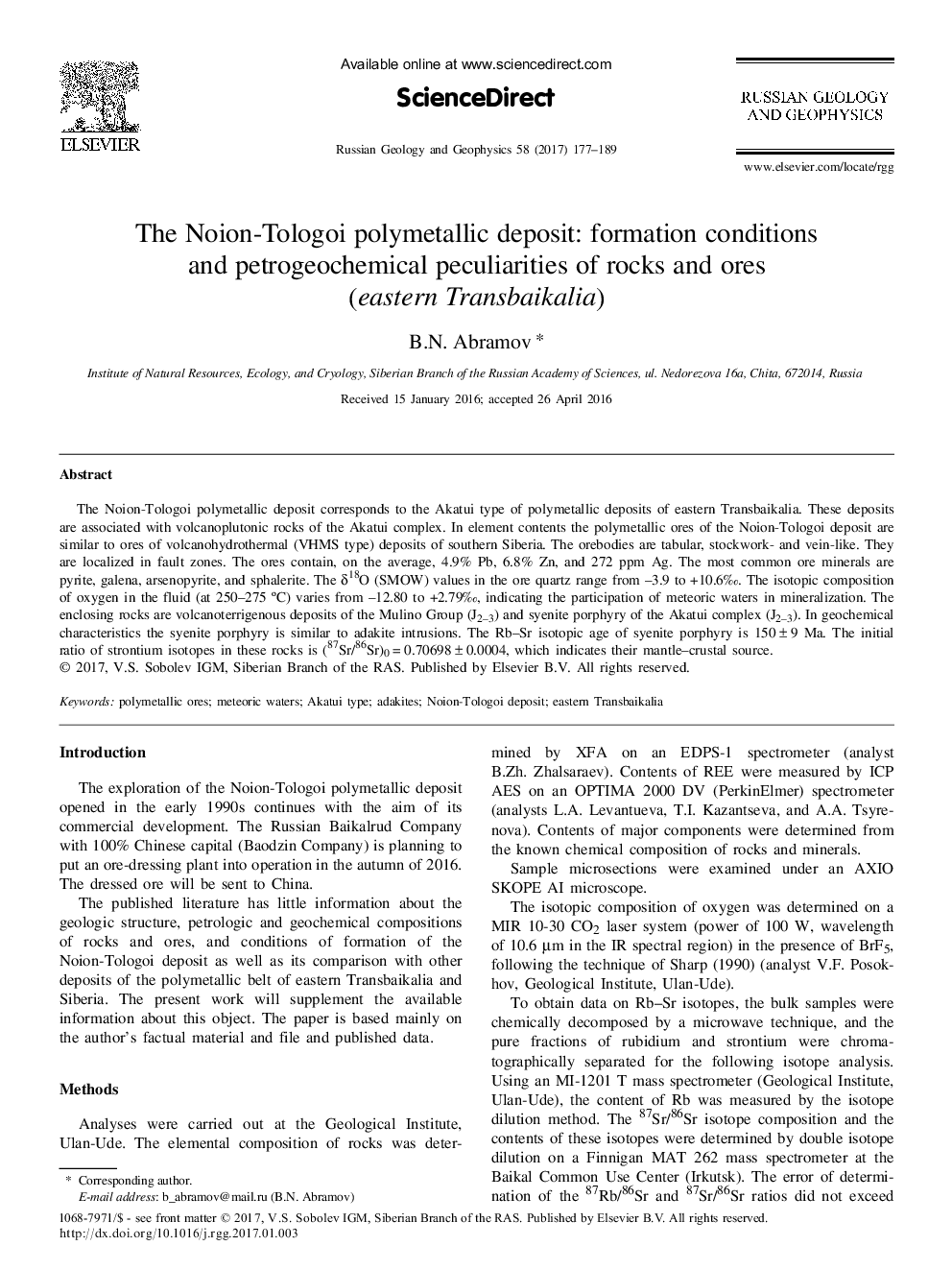| Article ID | Journal | Published Year | Pages | File Type |
|---|---|---|---|---|
| 5787026 | Russian Geology and Geophysics | 2017 | 13 Pages |
Abstract
The Noion-Tologoi polymetallic deposit corresponds to the Akatui type of polymetallic deposits of eastern Transbaikalia. These deposits are associated with volcanoplutonic rocks of the Akatui complex. In element contents the polymetallic ores of the Noion-Tologoi deposit are similar to ores of volcanohydrothermal (VHMS type) deposits of southern Siberia. The orebodies are tabular, stockwork- and vein-like. They are localized in fault zones. The ores contain, on the average, 4.9% Pb, 6.8% Zn, and 272 ppm Ag. The most common ore minerals are pyrite, galena, arsenopyrite, and sphalerite. The δ18O (SMOW) values in the ore quartz range from -3.9 to + 10.6â°. The isotopic composition of oxygen in the fluid (at 250-275 °C) varies from -12.80 to + 2.79â°, indicating the participation of meteoric waters in mineralization. The enclosing rocks are volcanoterrigenous deposits of the Mulino Group (J2-3) and syenite porphyry of the Akatui complex (J2-3). In geochemical characteristics the syenite porphyry is similar to adakite intrusions. The Rb-Sr isotopic age of syenite porphyry is 150 ± 9 Ma. The initial ratio of strontium isotopes in these rocks is (87Sr/86Sr)0 = 0.70698 ± 0.0004, which indicates their mantle-crustal source.
Keywords
Related Topics
Physical Sciences and Engineering
Earth and Planetary Sciences
Geology
Authors
B.N. Abramov,
